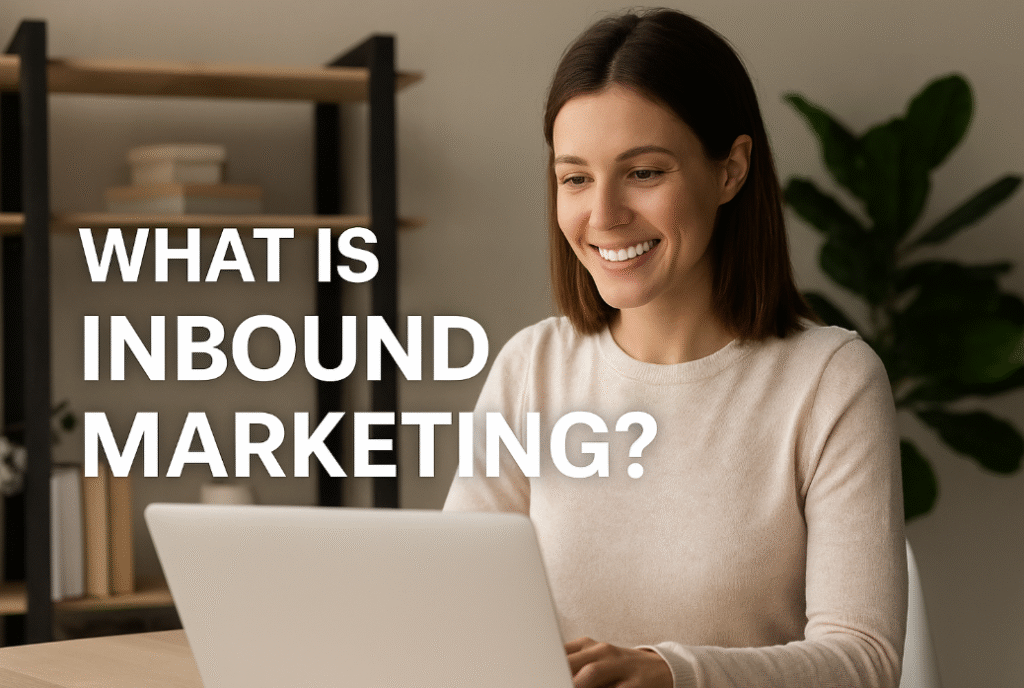
Table of Contents
- Introduction
- How Inbound Marketing Works
- The 3 Core Stages of Inbound Marketing
- Examples of Inbound Marketing Strategies
- Inbound vs. Outbound Marketing
- Final Thoughts
- FAQs
Introduction
Gone are the days when cold calls and aggressive ads ruled the marketing world. In today’s digital age, consumers are more empowered—they research, compare, and make decisions independently. This is where Inbound Marketing comes in.
Instead of pushing your brand onto people, inbound marketing pulls them in by offering helpful content, building trust, and guiding them naturally toward a purchase. It’s marketing that people actually want to engage with.
How Inbound Marketing Works
At its core, inbound marketing is about solving your audience’s problems and offering real value before trying to sell anything. The idea is to become a trusted resource, so when they’re ready to buy, they turn to you—willingly.
This method relies heavily on digital channels like search engines, blogs, social media, and email, where customers are already spending their time. By being present with the right message at the right moment, you naturally build a relationship with potential buyers.
The 3 Core Stages of Inbound Marketing

Inbound marketing operates through a clear and purposeful journey that aligns with how people naturally research, evaluate, and purchase products or services. This journey can be broken down into three essential stages: Attract, Engage, and Delight.
Attract
The first stage, Attract, is all about drawing the right audience to your brand—not just any traffic, but visitors who are genuinely interested in what you offer. To do this, businesses create content that addresses the specific questions, needs, or challenges that potential customers are actively searching for. This content can take many forms, such as blog articles, SEO-optimized website pages, informative social media posts, or how-to videos. The goal is to appear in the spaces where your ideal audience is already spending time and searching for answers—especially on search engines and social platforms. By showing up with valuable insights, you position yourself as a helpful, trustworthy source.
Engage
Once you’ve attracted visitors, the next step is to Engage them in a way that builds connection and interest. This is where you offer them more personalized, relevant content in exchange for their contact information—turning visitors into leads. It’s not about hard-selling; instead, it’s about showing empathy and offering solutions. A good engagement strategy might include downloadable guides, webinars, or interactive tools that help solve a problem or answer a pressing question. Once a lead enters your system, you can nurture the relationship through thoughtful email campaigns, CRM-powered personalization, and marketing automation that respects their pace. This stage is about building trust and opening up a two-way conversation that guides them toward becoming a customer.
Delight
The final stage, Delight, is often overlooked—but it’s where long-term loyalty and brand advocacy begin. After someone makes a purchase, your job isn’t over. Inbound marketing encourages businesses to continue providing value post-sale through helpful onboarding content, responsive customer support, follow-up emails, and personalized recommendations. You want to ensure your customers feel heard and appreciated. When you consistently go the extra mile to delight your customers, they’re more likely to return—and better yet, refer others. Delighted customers often become promoters of your brand, spreading positive word-of-mouth and strengthening your inbound marketing engine.
By understanding and applying these three stages, businesses can create a self-sustaining marketing ecosystem—where content, trust, and relationships drive sustainable growth.
Examples of Inbound Marketing Strategies
- A fitness brand creating free meal plans and workout tips that rank well on Google.
- A B2B software company offering webinars that teach prospects how to optimize workflows.
- A local service provider using social media to answer FAQs and provide home care tips.
- A retail brand emailing first-time visitors with styling advice and product guides.
Inbound vs. Outbound Marketing
| Feature | Inbound Marketing | Outbound Marketing |
|---|---|---|
| Approach | Pull – attracts customers | Push – interrupts customers |
| Examples | Blog, SEO, social posts | Cold calls, TV/radio ads |
| Cost Efficiency | More cost-effective | Typically more expensive |
| Customer Relationship | Builds trust over time | Often seen as intrusive |
| Long-Term Benefits | High – generates ongoing leads | Lower – stops when campaign ends |
Final Thoughts
Inbound marketing is not a quick-fix; it’s a long-term investment. But the results—higher trust, better-qualified leads, and stronger customer loyalty—are well worth it. Whether you’re a small business or an enterprise, adopting inbound can transform how people see and engage with your brand.
FAQs
1. Is inbound marketing better than outbound?
Inbound is generally more cost-effective and customer-friendly. However, a mix of both often works best depending on your goals and audience.
2. How long does it take to see results?
Inbound marketing is a long-term strategy. Most businesses begin seeing results in 3–6 months, with consistent effort.
3. Can inbound marketing work for small businesses?
Absolutely! In fact, it’s ideal for small businesses with limited budgets. Quality content and SEO can level the playing field with bigger competitors.



